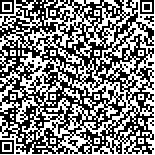| 引用本文: |
李亚鹏,李琴,李莉,陈燕君,彭好.水苏碱调节Hippo-YAP信号通路对新生大鼠缺氧缺血性脑损伤的神经保护作用[J].湖南中医药大学学报,2024,44(2):213-219[点击复制] |
|
| |
|
|
| 本文已被:浏览 1681次 下载 902次 |
| 水苏碱调节Hippo-YAP信号通路对新生大鼠缺氧缺血性脑损伤的神经保护作用 |
| 李亚鹏,李琴,李莉,陈燕君,彭好 |
| (遂宁市中心医院儿科中心, 四川 遂宁 629000) |
| 摘要: |
| 目的 探究水苏碱(stachydrine,STA)对缺氧缺血性脑损伤(hypoxic-ischemic brain damage,HIBD)新生大鼠的神经保护作用,并分析其作用机制。方法 将新生SD大鼠随机分为假手术组、HIBD组、STA低剂量(5 mg/kg)组、STA中剂量(10 mg/kg)组、STA高剂量(20 mg/kg)组、维替泊芬(10 mg/kg)+STA高剂量(20 mg/kg)组,除假手术组外,其余大鼠构建HIBD大鼠模型。对各组大鼠进行神经功能缺损评分,采用Morris水迷宫实验进行认知功能评价,测定各组大鼠脑含水量和脑指数,HE染色、尼氏染色观察脑组织神经元损伤,TUNEL染色观察脑组织神经元细胞凋亡情况,Western blot法检测YES相关蛋白(YES associated protein,YAP)、p-YAP、哺乳动物STE20样蛋白激酶1(mammalian sterile 20-like kinase 1,MST1)、p-MST1、具有PDZ基序的转录共激活因子(transcriptional coactivator with PDZ-binding motif,TAZ)蛋白表达。结果 与假手术组比较,HIBD组海马组织损伤加重,尼氏小体减少(P<0.05),神经功能缺损评分、逃避潜伏期、脑组织含水量、脑指数、神经元细胞凋亡率、p-YAP/YAP比值、p-MST1/MST1比值显著增加(P<0.05),穿越平台次数、TAZ表达显著降低(P<0.05);与HIBD组相比,STA低、中、高剂量组海马组织损伤改善,尼氏小体增加(P<0.05),神经功能缺损评分、逃避潜伏期、脑组织含水量、脑指数、神经元细胞凋亡率、p-YAP/YAP比值、p-MST1/MST1比值显著降低(P<0.05),穿越平台次数、TAZ表达显著增加(P<0.05);与STA高剂量组相比,维替泊芬+STA高剂量组海马组织损伤加重,尼氏小体减少(P<0.05),神经功能缺损评分、逃避潜伏期、脑组织含水量、脑指数、神经元细胞凋亡率、p-YAP/YAP比值、p-MST1/MST1比值显著增加(P<0.05),穿越平台次数、TAZ表达显著降低(P<0.05)。结论 STA可能通过调控Hippo-YAP信号通路、减少神经损伤和神经元细胞凋亡、改善神经功能,发挥对HIBD新生大鼠的神经保护作用。 |
| 关键词: 缺氧缺血性脑损伤 神经保护 新生大鼠 神经元 细胞凋亡 水苏碱 Hippo-YES相关蛋白信号通路 |
| DOI:10.3969/j.issn.1674-070X.2024.02.006 |
| 投稿时间:2023-09-06 |
| 基金项目:四川省医学(青年创新)科研课题计划项目(S19015)。 |
|
| Neuroprotective effects of stachydrine on hypoxic-ischemic brain damage in neonatal rats by regulating Hippo-YAP signaling pathway |
| LI Yapeng,LI Qin,LI Li,CHEN Yanjun,PENG Hao |
| (Pediatric Center, Suining Central Hospital, Suining, Sichuan 629000, China) |
| Abstract: |
| Objective To investigate the neuroprotective effects of stachydrine(STA) on neonatal rats with hypoxic-ischemic brain damage(HIBD) and analyze its mechanism of action.Methods Neonatal SD rats were randomly grouped into sham-operated group,HIBD group, low-, medium-, and high-dose STA groups(5 mg/kg, 10 mg/kg, and 20 mg/kg, respectively), and verteporfin(10 mg/kg)+high-dose STA(20 mg/kg) group. Except for the sham-operated group, other rats were applied to establishing HIBD rat models. The neurological deficits of rats in each group were scored, and Morris water maze experiment was performed to evaluate the cognitive function. The brain water content and brain index of rats in each group were measured. HE staining and Nissl staining were used to observe neuronal damage in the brain tissue, TUNEL staining to observe neuronal apoptosis, and Western blot to determine the protein expressions of YES associated protein(YAP), p-YAP, mammalian sterile20-like kinase 1(MST1), p-MST1, and transcriptional coactivator with PDZ-binding motif(TAZ).Results Compared with sham-operated group, the hippocampal tissue damage in HIBD group was aggravated, the number of Nissl bodies decreased(P <0.05), the neurological deficit score, escape latency, brain tissue water content, brain index, neuronal apoptosis rate, and ratios of p-YAP/YAP and p-MST1/MST1 were significantly higher(P<0.05), but the platform crossing times and TAZ expression were significantly reduced(P<0.05). Compared with HIBD group, the hippocampal tissue damage in the low-, medium-, and high-dose STA groups was reduced, the number of Nissl bodies increased(P<0.05), the neurological deficit score, escape latency, brain tissue water content, brain index, neuronal apoptosis rate, and ratios of p-YAP/YAP and p-MST1/MST1 were significantly lower(P<0.05), while the platform crossing times and TAZ expression significantly increased(P<0.05). Compared with high-dose STA group, the hippocampal tissue damage in verteporfin+high-dose STA group was aggravated, the number of Nissl bodies decreased(P<0.05), the neurological deficit score, escape latency,brain tissue water content, brain index, neuronal apoptosis rate, and ratios of p-YAP/YAP and p-MST1/MST1 were significantly elevated(P<0.05), but the platform crossing times and TAZ expression were significantly reduced(P<0.05).Conclusion STA may exert neuroprotective effects on HIBD neonatal rats by regulating Hippo-YAP signaling pathway, reducing neuron damage and neuronal apoptosis, and thus improving the neurological function. |
| Key words: hypoxic-ischemic brain damage neuroprotection neonatal rat neuron apoptosis stachydrine Hippo-YES associated protein signaling pathway |
|

二维码(扫一下试试看!) |
|
|
|
|




